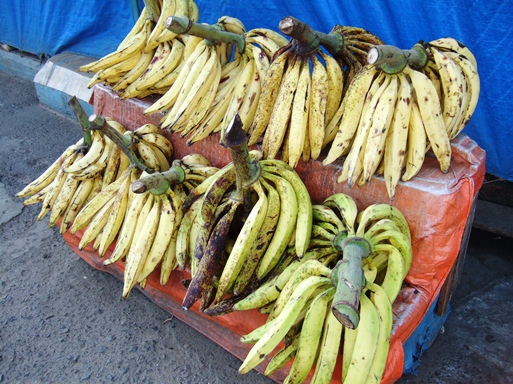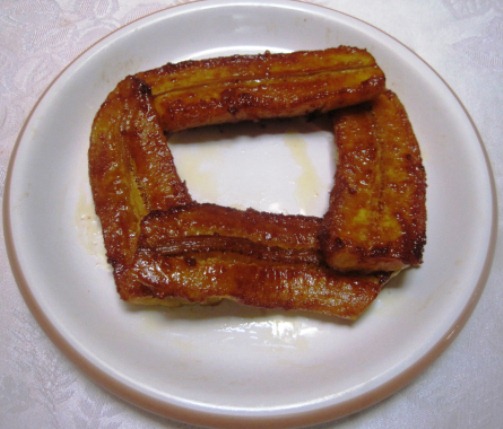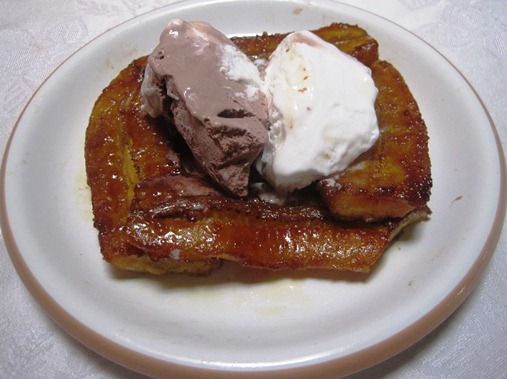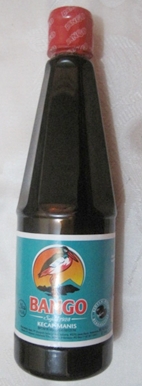Most of my life, I live in a city with warm and humid climate, I am supposed to get used to hot and humid weather. But somehow my body does not seem willing to adapt to it. The combination of warm temperature and high humidity like now always make me all sweaty and cranky….
How can I stay cool on a hot day like this?
How about making cold dessert drinks?
In my country, we have so many popular drinks which are based on ice (in our language we call it Es) and can also be classified as desserts. Typical examples include es campur (mixed fruit ice drink), es cincau (grass jelly ice drink), es blewah (musk melon ice drink), es kelapa muda (young coconut ice drink), es alpukat (avocado juice), es cendol and many many more.
Here’s a few of most popular Indonesian Cold Dessert Drinks to stay cool on a hot day and also fit well for breaking the fast:
Es Kelapa Muda (Young Coconut Ice Drink)
If you travel to my country, you will find lots of coconut tree. We like to drink coconut water, and also make drinks called Es Kelapa Muda (Young Coconut Ice Drink) where we mix the slippery young coconut with the coconut water then add ice cubes and this is how we make the drink:
Ingredients
- 2 cups of young coconut water
- 1/2 cup young coconut flesh
How to prepare:
- take the water from a fresh, young coconut
- scrape slithers of coconut flesh
- add the coconut flesh into the coconut water in a glass or right in the coconut shell and add some ice cubes
Es Kelapa Jeruk (Young Coconut in Orange Juice)
This drink is a combination of young coconut and orange juice. The slippery floating slivers of fresh coconut flesh will add textural dimension to the refreshing fresh orange juice, so yummy……
Ingredients
- 8 medium size oranges, squeeze to get the juice
- 1 cup fresh young coconut flesh
- simple syrup (optional)
- ice cubes
How to prepare:
- Combine roughly 1 part fresh-squeeze orange juice with 1 part water.
- Typically a few spoonfuls of simple syrup are added and let it drop to the bottom of the glass so that the sweetness can be adjusted with a little stirring (optional).
- Add in the coconut flesh and ice cubes.
Es Blewah (Musk Melon Ice Drink)
picture from unique-of-images.blogspot.com
Musk melon prevents a heat related disorders and making it a great refresher and stimulator on a hot day. Its high water content helps to reduce body heat. This drink is very popular during fasting month.
Ingredients
- 250 gram ripe blewah (musk melon), cut into half, peel off the outer skin of the musk melon and sliver the flesh
- 800 ml water
- 200 ml red syrup
- ice cubes
How to serve (for 4 glasses)
- In a glass put the musk melon slices.
- Add water and syrup and ice cubes.
Es Campur (Mixed Iced Fruit Drink)
picture from www.houseofannie.com
This special Es Campur or also known as Es Teler can be the ‘so called’ trademark for many of Indonesian Restaurants and Food-Stalls. It has a sweet and fruity taste with chunks of jack-fruit, avocado and young coconut pulp! The coconut juice combination will cool you down from the heat especially when this drink is consume during hot day under the sun!
Ingredients:
- 1 Young coconut flesh (spoon it)
- 1 Avocado, take out the flesh, cut into chunks or thinly sliced
- 10 pieces of Jack-fruits, seeded and thinly sliced
- 15 pieces buah Atap, sliced (buah Atap is the flesh of the young seeds of the mangrove plant Nypa fruticans. It is usually soaked in sugar syrup)
- 500 ml of simple syrup
- 5 tablespoons sweetened condensed milk
- crushed or shaved ice
Note: This dessert can be sweetened to taste, adding more, or less, of the milk mixture and the syrups.
Simple syrup:
- 400 ml coconut milk (or plain water)
- 100 gr sugar
How to prepare:
- Add young coconut pulp, avocado, jack-fruit and buah Atap in a glass or in a bowl.
- Add in simple syrup and sweetened condensed milk or according to your taste. Stir.
- Top with crushed or shaved ice. Enjoy!
Es Cendol (Chendol Iced Drink)
picture from madeinindonesia-store.com
Es cendol is typical Indonesian drink made from rice flour served with coconut milk, sugar palm and ice cubes or shaved ice. While Indonesian people drink es cendol as a nice refreshment, a lot of Westerners like es cendol as dessert.
Ingredients for cendol
- 125 gr rice flour
- 50 gr sago flour
- 75 ml pandan leaves water (boil water with pandan leaves until it has green color)
- 450 ml water
- salt as needed
Other ingredients
- 200 gram palm sugar, boil with 125 ml water until it dissolves. Strain the palm sugar water and boil again. Set aside.
- 500 ml coconut milk. Boil and set aside to cool.
How to make cendol
- Mix rice flour and sago flour, then mix it with some of the water.
- Boil the rest of the water, add green pandan leaves water and salt.
- Put the flour mixtures into the boiled water.
- Stir well and cook until it thickens (paste-like).
- Drain with special cendol strain (usually the strainer has round holes), so when we press the cendol mixture it will go out of the strain as roundish short cendol.
- Put these cendol directly into a bowl with water and ice in it.
- Cendol will be solid and then drain them again. Set aside.
How to serve
- Put some cendol into a tall glass, pour palm sugar syrup and coconut milk (separate layers). You can add shaved ice or just ice cubes.
References:
- www.houseofannie.com
- www.madeinindonesia-store.com
- www.uniqueofimages.blogspot.com


















































